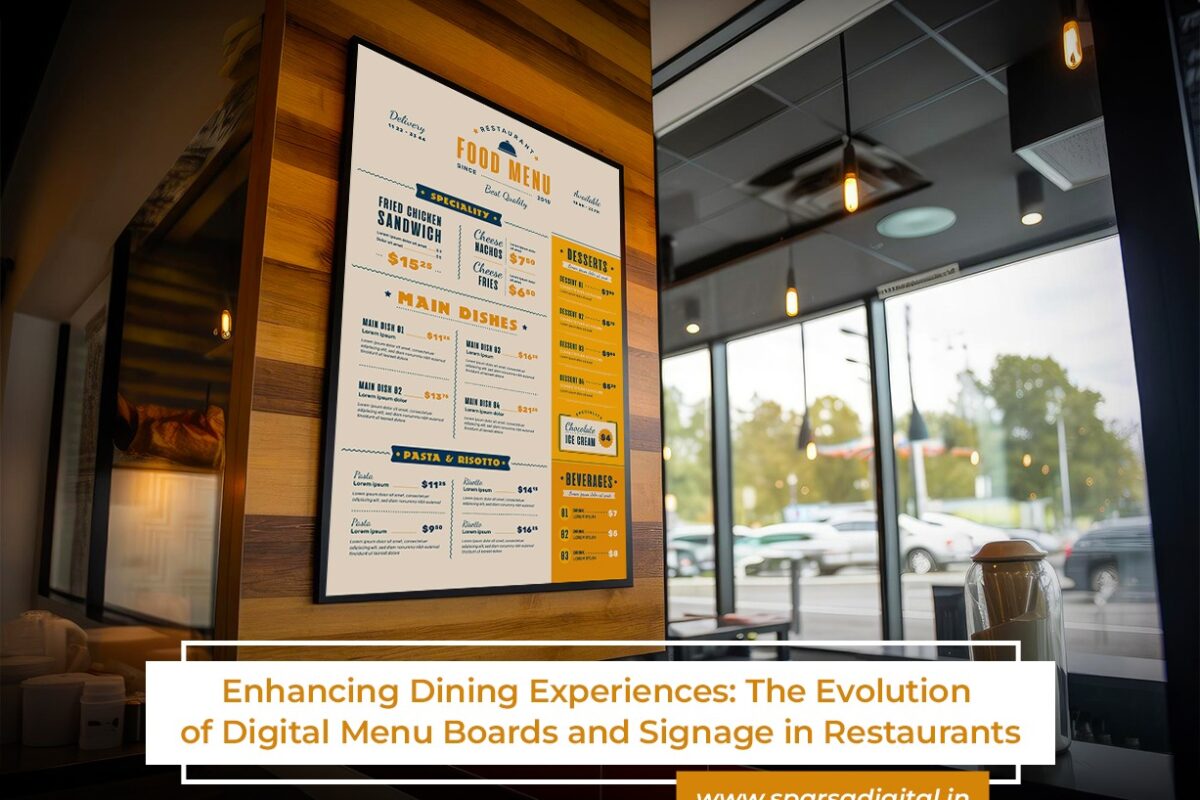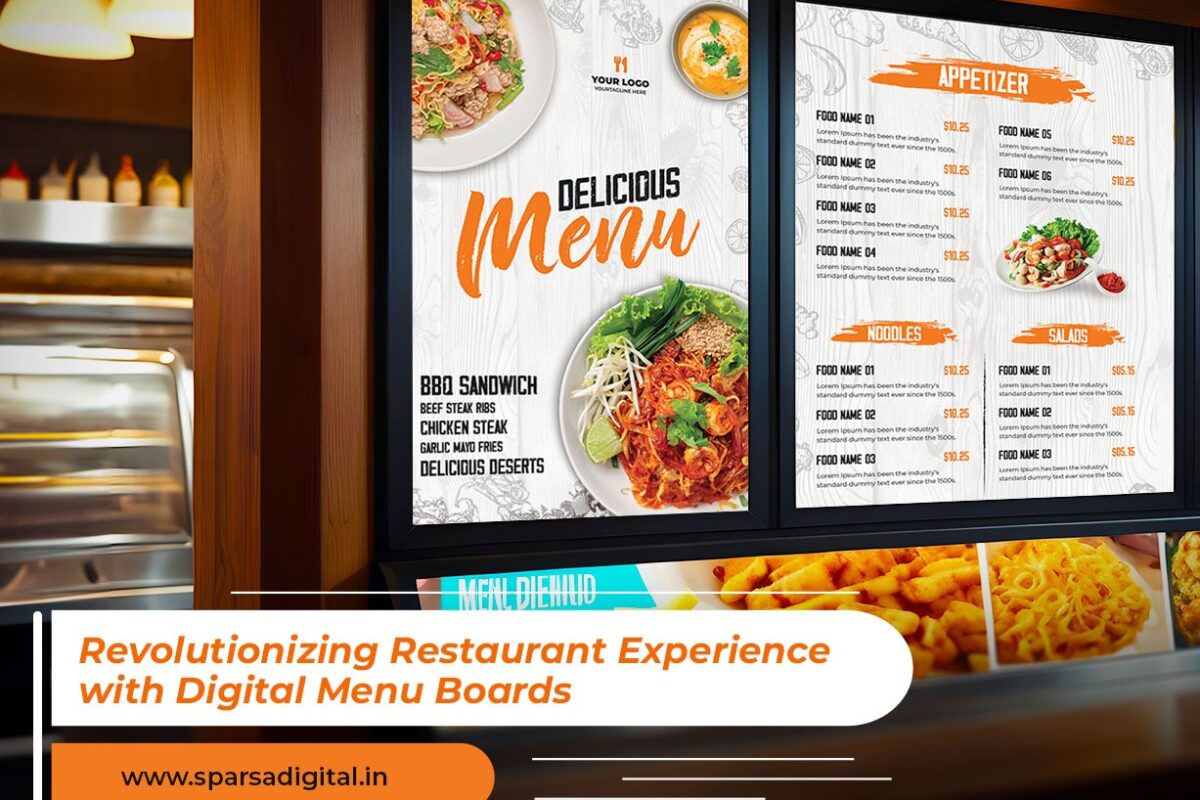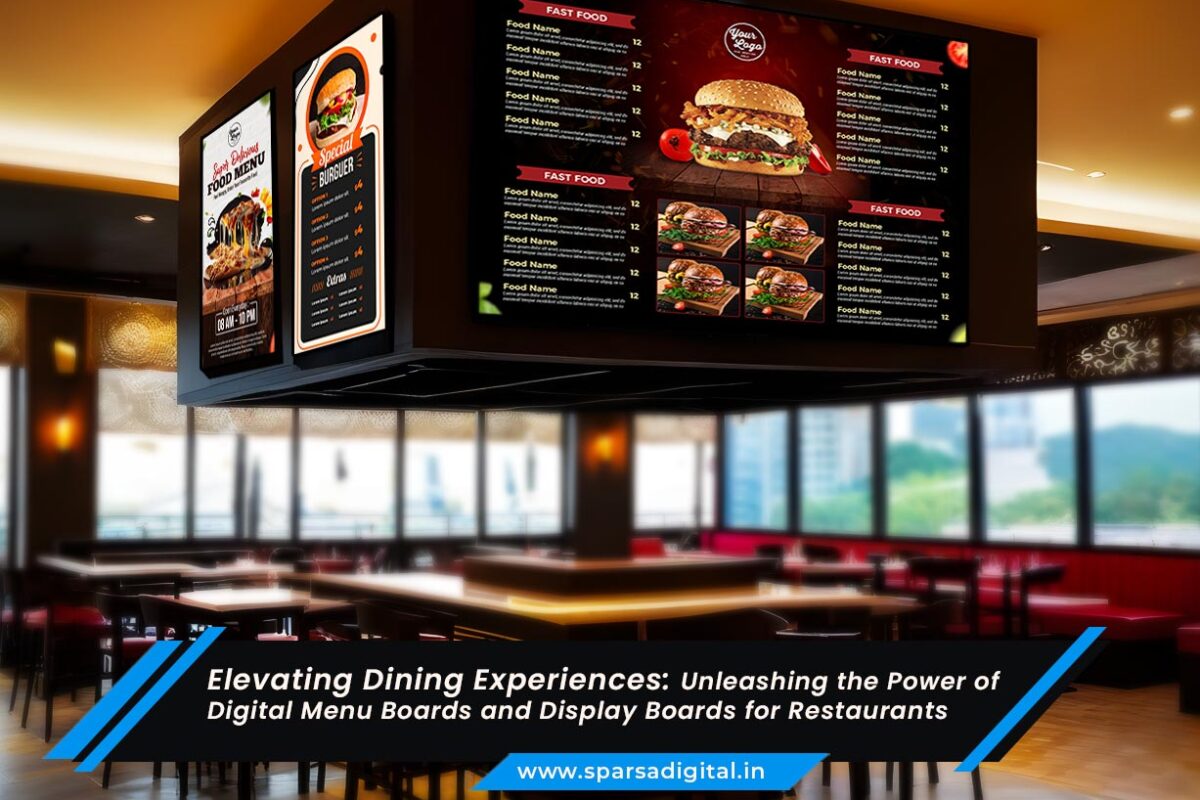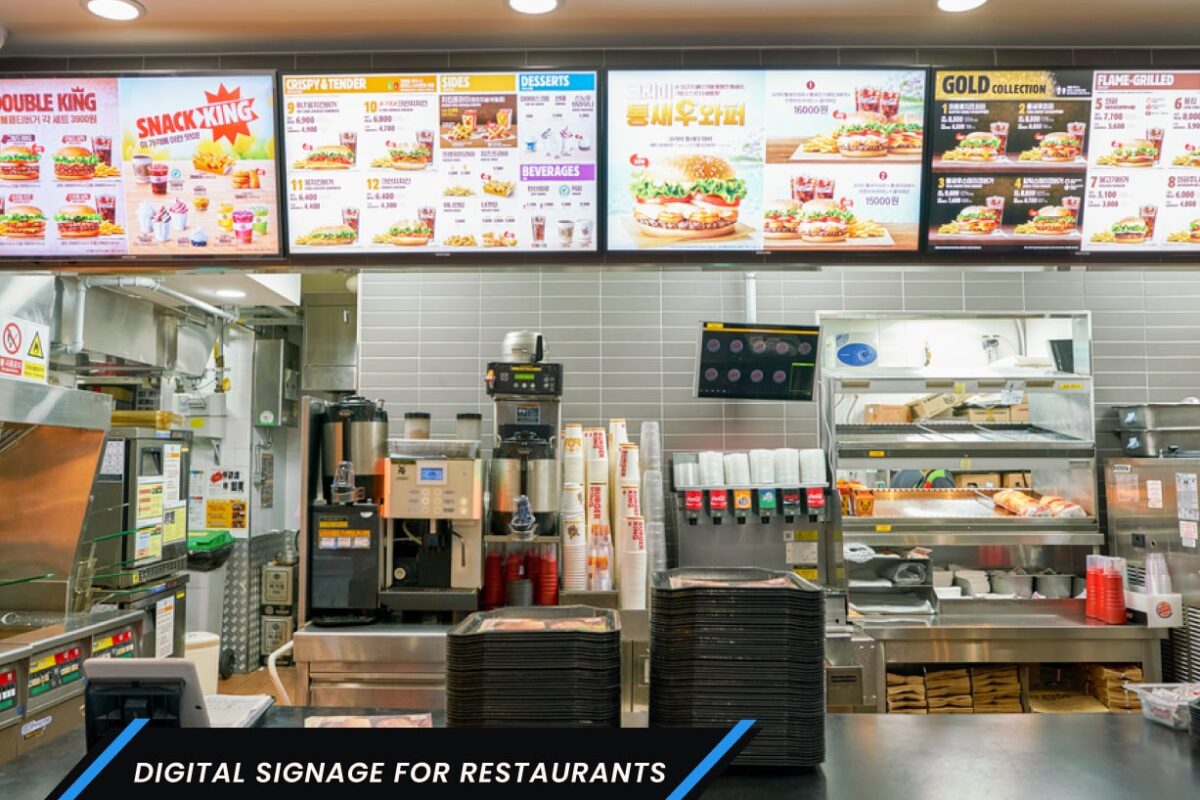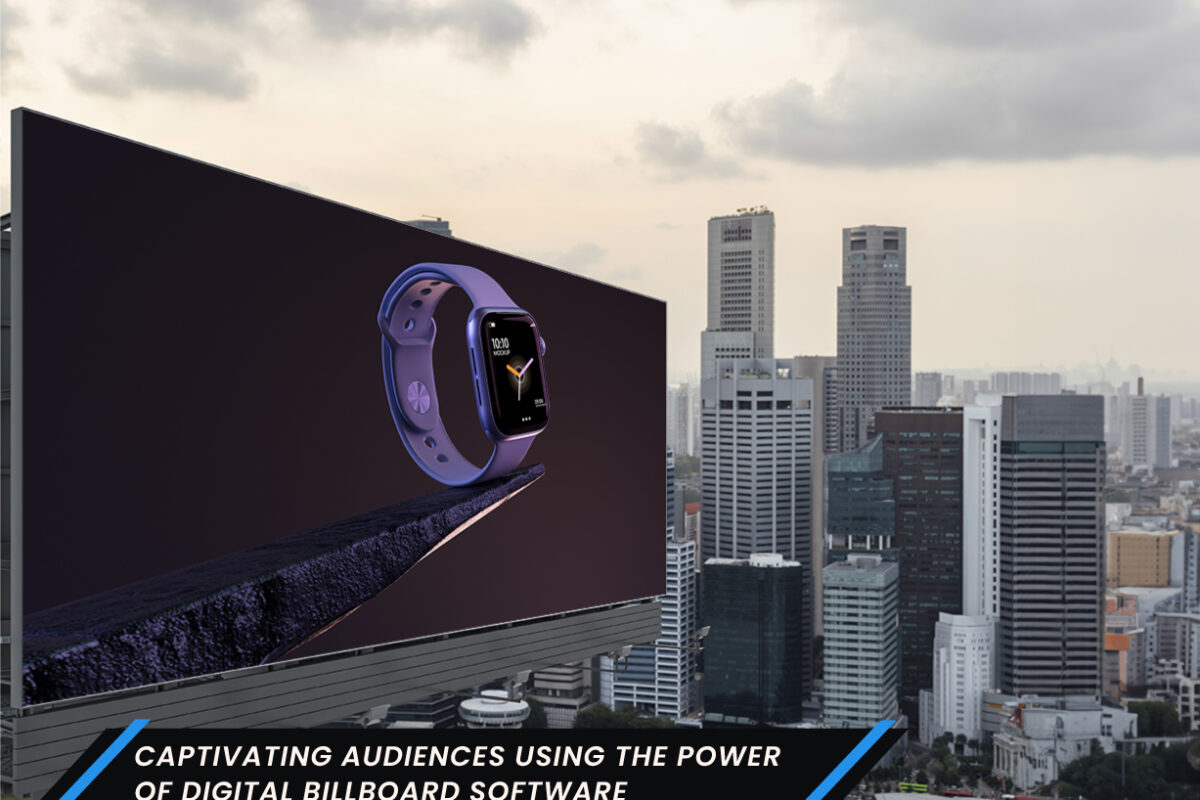In the ever-evolving realm of hospitality, restaurants are constantly seeking innovative ways to elevate the dining experience for their patrons. One such innovation that has gained widespread adoption in recent years is the integration of digital menu boards and signage. These dynamic displays not only modernize the environment but also offer benefits in terms of flexibility, efficiency, and customer engagement. In this blog, we delve into the evolution of digital menu boards, exploring their impact on operations and customer satisfaction.
Step into a modern restaurant, and you’re likely to encounter vibrant displays adorning the walls, showcasing mouth-watering dishes and promotions. Gone are the days of static printed menus and traditional chalkboards. Today’s diners expect immersive digital experiences that captivate their attention and enhance their dining journey. Digital menu boards have emerged as powerful tools under digital signage for restaurants to achieve these objectives. These help them revolutionize how they communicate with customers and manage their operations.
The Rise of Digital Menu Boards
The concept of digital menu boards first gained prominence in the fast-food industry, where speed of service is paramount. In fast-food chains, digital menu boards enable real-time updates of menu items, pricing, and promotions across multiple locations. This ensures consistency and accuracy in messaging. However, the benefits of digital menu boards extend far beyond fast food. This includes upscaling restaurants and casual dining establishments alike embracing this technology to enhance their brand image and customer experience.
Benefits of Digital Menu Boards for Restaurants
- Dynamic Content: Unlike static printed menus, digital menu boards allow restaurants to showcase dynamic content such as high-resolution images, videos, and animations. This visual richness captures the attention of diners and entices them to explore menu offerings in greater detail.
- Real-Time Updates: With digital menu boards, restaurants can update menu items, pricing, and promotions without the need for reprinting or manual changes. This agility enables restaurants to respond quickly to changes in inventory, seasonal ingredients, or market trends.
- Customization and Personalization: Digital menu boards offer unparalleled flexibility in terms of customization and personalization. Restaurants can tailor content based on factors. Such as time of day, day of the week, or customer demographics, ensuring relevant messaging to different audience segments.
- Enhanced Upselling Opportunities: Interactive features such as suggestive selling prompts and upsell prompts can be integrated into digital menu boards. This can help to encourage customers to explore additional menu items or upgrades. This strategic merchandising approach can boost average check sizes and drive incremental revenue.
- Streamlined Operations: Digital menu boards streamline operational processes by centralizing menu management and eliminating the need for manual updates. This frees up staff time and resources, allowing them to focus on delivering exceptional service to guests.
- Brand Consistency: Digital menu boards enable consistent branding across multiple locations, ensuring that the restaurant’s identity and messaging remain cohesive. This consistency builds brand recognition and fosters trust among customers.
Digital Signage for Restaurants: Beyond the Menu
While digital menu boards are a focal point of restaurant digital signage, their application extends beyond displaying menu items. Restaurants are leveraging digital signage to enhance various aspects of the dining experience, including:
- Interactive Wayfinding: Digital signage can serve as interactive wayfinding tools. Like guiding guests to their tables or directing them to different areas of the restaurant, such as restrooms or spaces.
- Entertainment and Ambiance: Digital displays can be used to entertain guests with content such as live sports events, chef interviews, or culinary tutorials. Additionally, dynamic lighting effects and ambient visuals can enhance the overall ambiance of the dining area.
- Promotional Displays: In addition to showcasing menu items, digital signage can be used to promote special events, happy hour deals, or promotions. Eye-catching visuals and animated graphics help grab the attention of diners and drive traffic during off-peak hours.
- Customer Feedback and Surveys: Digital signage kiosks can facilitate customer feedback collection and surveys, allowing restaurants to gather valuable insights into guest satisfaction.
- Digital Ordering and Payment: Some restaurants are integrating digital signage with ordering and payment systems, enabling guests to place orders and settle bills directly from their tables. This self-service approach enhances convenience and expedites the dining process.
Implementation Considerations
While the benefits of digital menu boards and signage are clear, their successful implementation requires careful planning and consideration of various factors:
- Hardware and Software Selection: Choosing the right hardware components and digital signage software is crucial for achieving optimal performance and reliability. Factors to consider include display quality, durability, connectivity options, and scalability.
- Content Strategy: Developing a compelling content strategy is essential for maximizing the impact of digital menu boards and signage. Restaurants should invest in high-quality visuals, engaging videos, and relevant messaging that aligns with their brand identity and marketing objectives.
- Integration with POS Systems: Seamless integration with point-of-sale (POS) systems is necessary to ensure accurate pricing and inventory management. Digital signage for restaurants must be selected on the basis that it offers compatibility with their existing POS infrastructure.
- Staff Training and Support: Proper training and support are essential to empower staff to manage and operate digital menu boards effectively. Training programs should cover content management, troubleshooting procedures, and best practices for maximizing engagement.
- Compliance and Regulations: Restaurants must ensure compliance with relevant regulations and guidelines governing digital signage, including accessibility standards and data privacy regulations. Failure to comply with these requirements can result in legal and reputational risks.
The Future of Digital Signage for Restaurants
As technology continues to evolve, the future of restaurant digital signage holds exciting possibilities. Emerging technologies such as augmented reality (AR), artificial intelligence (AI) are poised to further enhance the interactivity of digital displays. AR-enabled menus could allow diners to visualize menu items in 3D or provide immersive dining experiences through gamification and storytelling.
Furthermore, the integration of AI-driven analytics and customer engagement platforms enables restaurants to gather actionable insights from digital signage interactions. By analyzing customer behavior and preferences, restaurants can tailor content and promotions in real-time, optimizing the dining experience for guests.
Conclusion
Digital menu boards and signage have emerged as tools for modern restaurants seeking to differentiate themselves in a competitive landscape. By leveraging dynamic content, real-time updates, and interactive features, restaurants can create immersive dining experiences that captivate guests. As technology continues to evolve, the future of restaurant digital signage holds tremendous potential to reshape the way we dine at food establishments.

